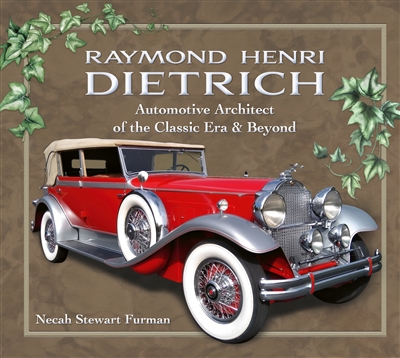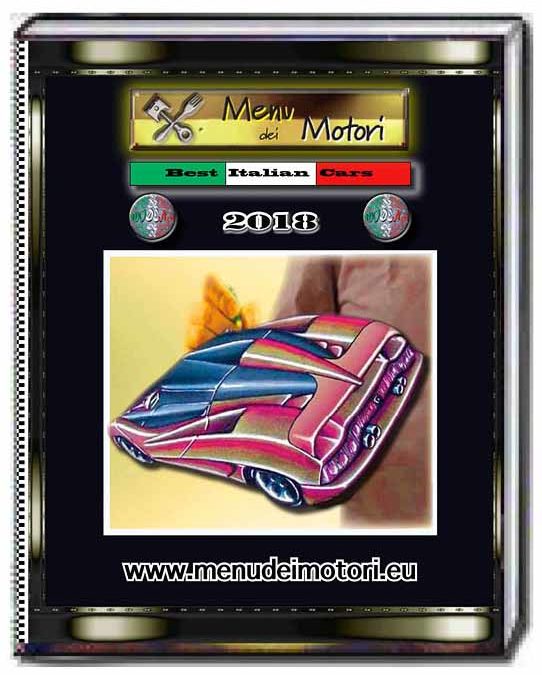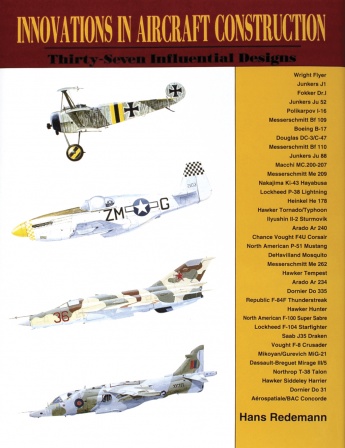
From the Wright Brothers’ famous “Wright Flyer” in 1903, to the “Concorde” in 1969 this book emphasizes the great strides made in aircraft construction in the sixty-six years between these two famous designs.
Presented in chronological order are thirty-seven classic designs that changed the history of flight: The Wright Flyer, Junkers J1, Fokker Dr. I, Junkers Ju 52, Polikarpov I-16, Messerschmitt Bf 109, Boeing B-17, Douglas DC-3/C-47, Messerschmitt Bf 110, Junkers Ju 88, Macchi MC.200-207, Messerschmitt Me 209, Nakajima Ki-43 Hayabusa, Lockheed P-38 Lightning, Heinkel He 178, Hawker Tornadeo/Typhoon, Ilyushin II-2 Sturmovik, Arado Ar 240, Chance Vought F4U Corsair, North American P-51 Mustang, De Havilland Mosquito, Messerschmitt Me 262, Hawker Tempest, Arado Ar 234, Dornier Do 335, Republic F-84F Thunderstreak, Hawker Hunter, North American F-100 Super Sabre, Lockheed F-104 Starfighter, Saab J35 Draken, Vought F-8 Crusader, Mikoyan/Gurevich MiG-21, Dassault-Breguet Mirage III/5, Northrop T-38 Talon, Hawker Siddeley Harrier, Dornier Do 31 and the Aerospatiale/BAC Concorde.
Each aircraft is shown in photographs, scale line drawings from various perspectives, and presents the various models, prototypes and export models – technical aspects and measurements are also given.

This is the definitive, comprehensive guide to motorcycle design. Tapping a deep well of knowledge and a lifetime of experience, motorcycle racer and historian Mick Walker sheds light on the evolution of one of the world’s ultimate status symbols and style icons―a development owing as much to history, politics, and technology as it does to image, lifestyle, and design. In a survey that ranges from the late nineteenth-century pioneers like Gottlieb Daimler and Hildebrand & Wolfmüller to present-day manufacturers―Harley Davidson, Ducati, Honda, BMW, Aprilia, and Triumph―Walker sets each model within its historical context and outlines the main technological and stylistic innovations that make each bike unique.
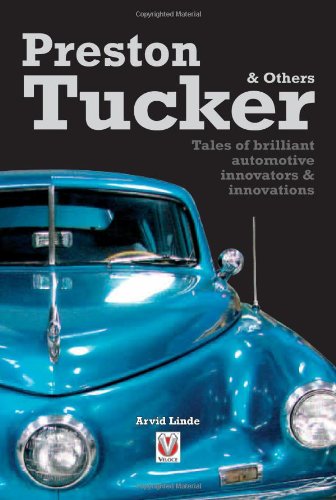
Although the history of the car stretches for a period only slightly longer than 100 years, it is nevertheless an area with many little-known gems waiting to be uncovered. This book is an alternative look at automotive history, celebrating the nonconformist spirit and a radical approach to designing cars. Based on documented facts, this book also contains dialogues and personal details from some of the most innovative engineers of the last century, helping the reader understand how passion and restlessness drive progress in car manufacturing. Many inventions that we tend to attribute to the contemporary car giants were in fact made many years ago, and few can remember the names of those talented people that created them. This book gives them due credit, and proves that a dream always wins.

Bentley and Rolls-Royce – there is one word that sums up the whole nimbus of myths and associations that surrounds these luxury car brands: ‘passion’. The passion of the designers and constructors as well as that of the aficionados, owners and collectors.br>
In numerous pictures and detailed texts this book presents 25 Bentley and Rolls-Royce cars from the Seeger Collection in Liechtenstein. The collection includes makes that have won numerous awards over the years and that boast famous previous owners such as Sophia Loren, and Princess Margaret of England. The heart of the collection is a complete series of all Phantom models starting with the Phantom I from 1925 up to the most recent model.
This fascinating book portrays history, innovations in design and technology, as well as outstanding creations of the closely connected brands. It pays homage to unparalleled automobile craftsmanship and will attract not only car enthusiasts but a wide audience.
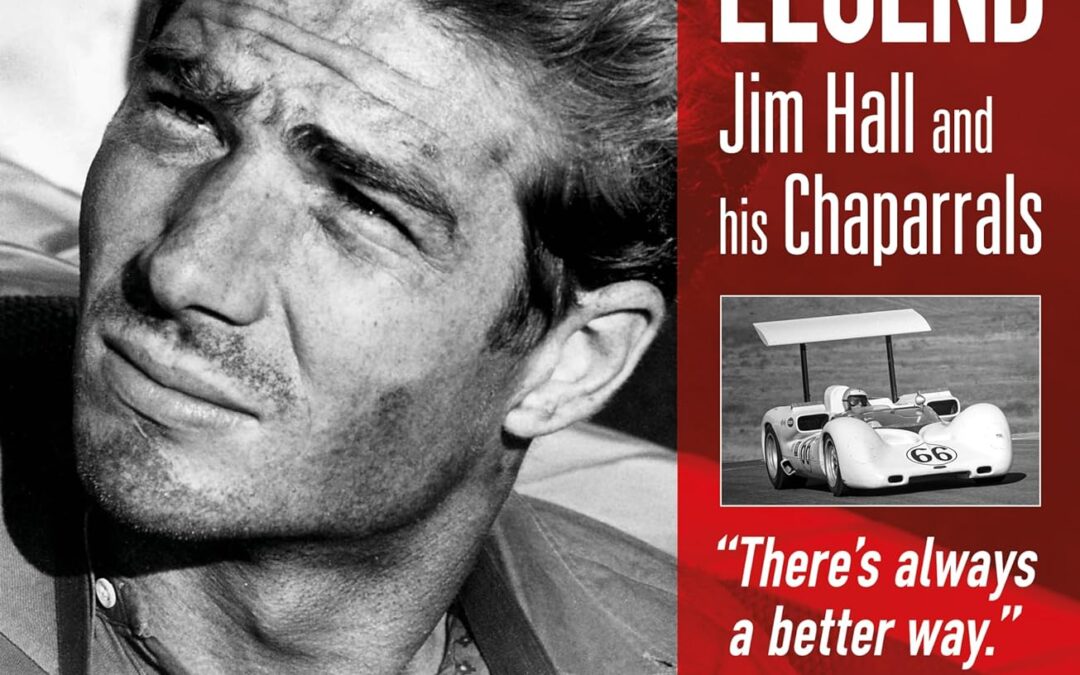

This first comprehensive history of the Kennedy Space Center, NASA’s famous launch facility located at Cape Canaveral, Florida, reveals the vital but largely unknown work that takes place before the rocket is lit. Though the famous Vehicle Assembly Building and launch pads dominate the flat Florida landscape at Cape Canaveral and attract 1.5 million people each year to its visitor complex, few members of the public are privy to what goes on there beyond the final outcome of the flaring rocket as it lifts into space. With unprecedented access to a wide variety of sources, including the KSC archives, other NASA centers, the National Archives, and individual and group interviews and collections, Lipartito and Butler explore how the methods and technology for preparing, testing, and launching spacecraft have evolved over the last 45 years. Their story includes the Mercury and Gemini missions, the Apollo lunar program, the Space Shuttle, scientific missions and robotic spacecraft, and the International Space Station, as well as the tragic accidents of Challenger and Columbia. Throughout, the authors reveal the unique culture of the people who work at KSC and make Kennedy distinct from other parts of NASA.
As Lipartito and Butler show, big NASA projects, notably the Space Shuttle and the International Space Station, had much to learn on the ground before they made it to space. Long before a spacecraft started its ascent, crucial work had been done, work that combined the muscular and mundane with the high tech and applied the vital skills and knowledge of the men and women of KSC to the design of vehicles and missions. The authors challenge notions that successful innovation was simply the result of good design alone and argue that, with large technical systems, real world experience actually made the difference between bold projects that failed and innovations that stayed within budget and produced consistent results. The authors pay particular attention to “operational knowledge” developed by KSC–the insights that came from using and operating complex technology. This work makes it abundantly clear that the processes performed by ground operations are absolutely vital to success.
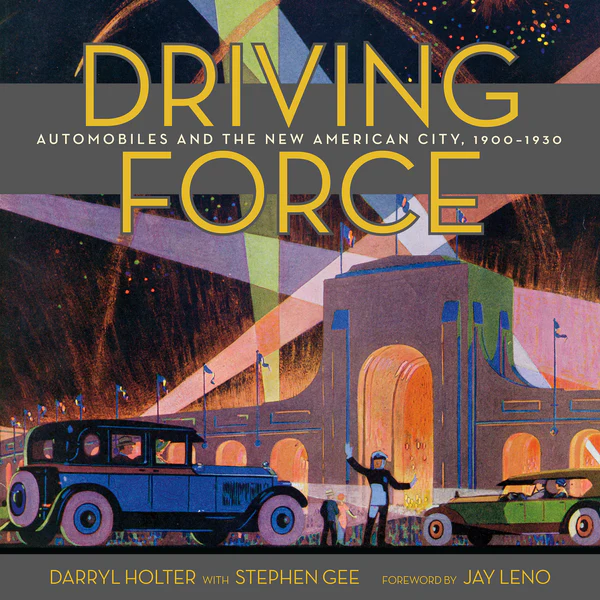
Driving Force: Automobiles and the New American City 1900-1930 (Angel City Press) explores how Los
Angeles’s enigmatic car culture propelled the explosive growth of America’s passion for cars. And with thoroughly researched text and page-after-page of vintage images, it shows how roadblocks that limited the sales of automobiles in the rest of the country, were eliminated in a new-thinking city in the earliest days of the car industry.
At the dawn of the twentieth century, as Los Angeles transformed from a rugged outpost to a booming metropolis, so too did the fledgling automobile simultaneously come of age. Ignited by an unlikely and visionary mix of entrepreneurs who ventured into unknown territory, early adopters broadened the market and convinced the public that cars were no longer a luxury—they were the ultimate modern necessity. From these early enthusiasts, men and women in various business recognized that the automobile would change society and wanted a piece of that action. The city’s auto business emerged initially among bicycle shop owners, carriage retailers, and automobile aficionados who started selling—and repairing!—cars. Their workshops thrived, expanded, and eventually became dealerships, the key component to the auto boom.
In this first major history of dealers at work—and one of the first books to chronicle the early history of cars in Los Angeles—authors Darryl Holter and Stephen Gee share the untold story of pioneering automobile dealers who seized the chance to join a start-up industry that reinvented an American city. Some became wealthy and powerful, others failed. But the lure of the automobile never wavered.
The L.A. dealers helped change the way cars were sold. They championed selling cars on credit while accepting“used cars” that buyers “traded in” so they could buy a new one. They introduced the West Coast to the concept of dealerships with service bays for on-site car repairs; persuaded manufacturers to design cars to their specifications and created custom vehicles and innovations that were copied around the country.
With more than 150 spectacular vintage images—many never before published—Driving Force brings to life the people who made the automobile an icon of the modern American city. In its pages, readers will discover how the story of the automobile is interwoven with Southern California’s unique topography and sun-drenched climate; a new era of women’s rights, and a growing female influence on automobile design; the creation of the Los Angeles Auto Show and the remarkable 1929 fire that threatened to destroy it; and how car dealers launched renowned L.A. radio and television stations, including KNX, KFI, and KCBS-KCAL.
As car collector extraordinaire Jay Leno explains in his Foreword to Driving Force, “Darryl Holter shows that auto retailers connected manufacturers to buyers, changing America and shaping the history, economy, and culture of Los Angeles.”
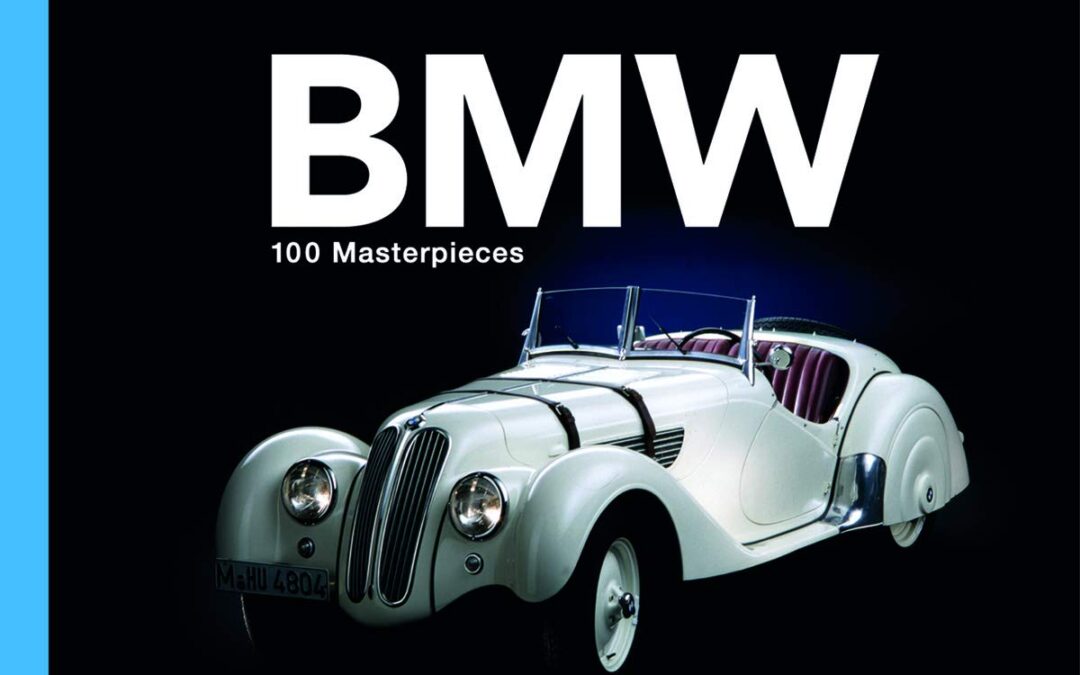
Premium automobiles. Dynamic driving experiences. Pioneering decisions in design and technology. The BMW brand stands for all this and more. From the company’s early aircraft engines to their motorcycles and today’s sleek hybrids, it has long defined the character of its brand with its slogan, “Sheer Driving Pleasure”—a promise delivered by BMW vehicles to the world and continually created anew by developers. As the company prepares to observe its centenary in 2016, this book travels back to its very first day, reflecting on one hundred years of production at the world’s leading manufacturer of top-quality automobiles and motorcycles.
Through text and images, BMW—100 Masterpieces details the company’s history, exploring the components of the BMW brand identity, selecting one hundred significant achievements, be they innovations in vehicles or the engineering process or world-renowned series and models like the famous BMW 328, the BMW Z series, or the motorcycle BMW K1. Special sections are devoted to the company’s racing program; its world records; and movie appearances, including the James Bond franchise. The book also discusses the company’s employment reforms and groundbreaking environmental decisions. Throughout the book, nearly three hundred vintage and new photographs show the evolution of this distinguished brand and the engines, motorcycles, and automobiles it produces.
Published with the aid of the BMW Museum in Munich and edited by the museum’s curator, Andreas Braun, BMW—100 Masterpieces celebrates a century of fine engineering and great automobiles while offering an absorbing look at how one of the world’s foremost vehicle manufacturers came to be.
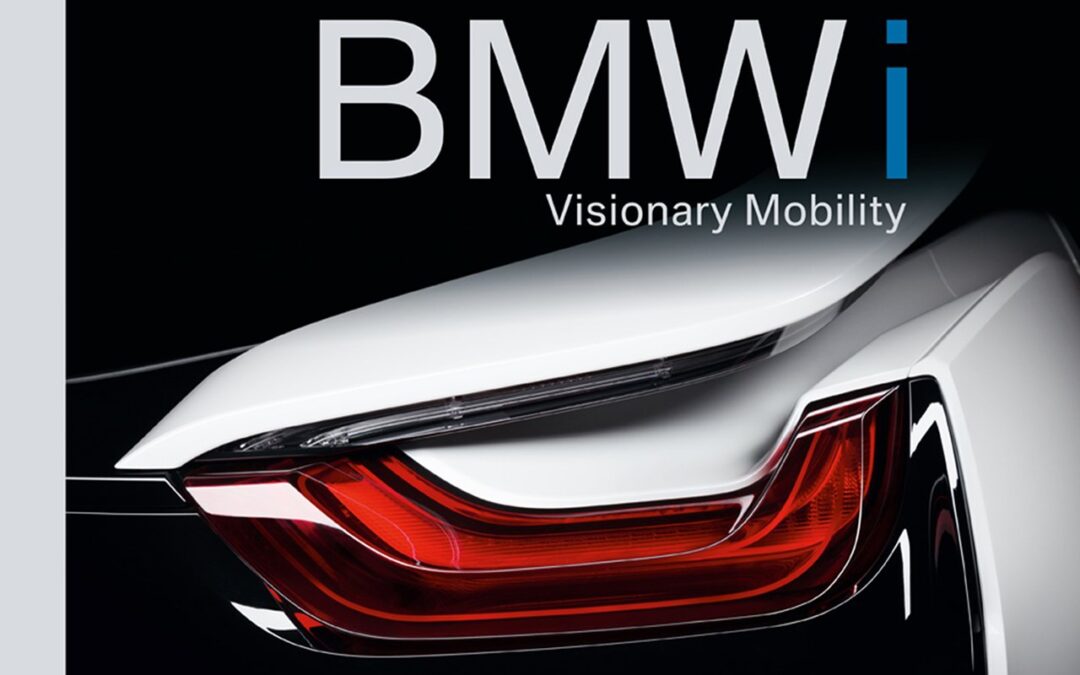
In the spring of 2008, a think tank of engineers, designers, trend researchers, and financial experts met on a factory floor of BMW’s parent plant in Munich to rethink mobility for a world of dwindling resources. Providing extensive insight into BMW’s workshop of ideas, this volume traces the venture’s design history and looks to the future of sustainable cars.
Grappling with major challenges of our time—from climate change to megacities and the scarcity of resources—contributors imagine solutions taking shape through technological innovations, networked mobility, sustainability in production, and the use of renewable materials. A unique look behind the scenes, this volume opens a window onto BMW’s complete development process, from initial conception to world premiere, presenting models for everything from plug-in hybrids with eucalyptus wood interiors to full-electric, self-driving cars. Replete with close-up photographs and fascinating model drawings, BMW i is a must-have for lovers of modern design and automobiles and for anyone interested in electro-mobility and sustainable technologies.
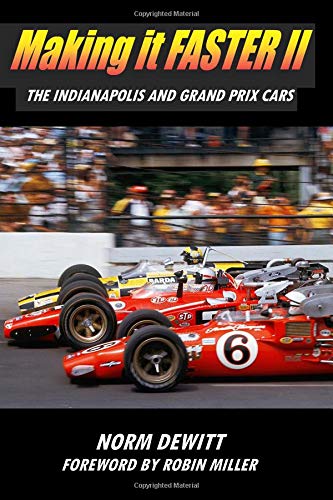
Making it FASTER II, The Indianapolis and Grand Prix Cars is the sequel to the #1 best selling book, Making it FASTER, Tales from the Endless Search for Speed. These are the stories of discovery by three generations of racers and designers who changed the state of the art forever. Tales of clever tricks and rule book manipulation in the ever-escalating contest between rule makers and loophole seekers, told by those directly involved in Indianapolis and Grand Prix racing. Their innovations dazzled us all.
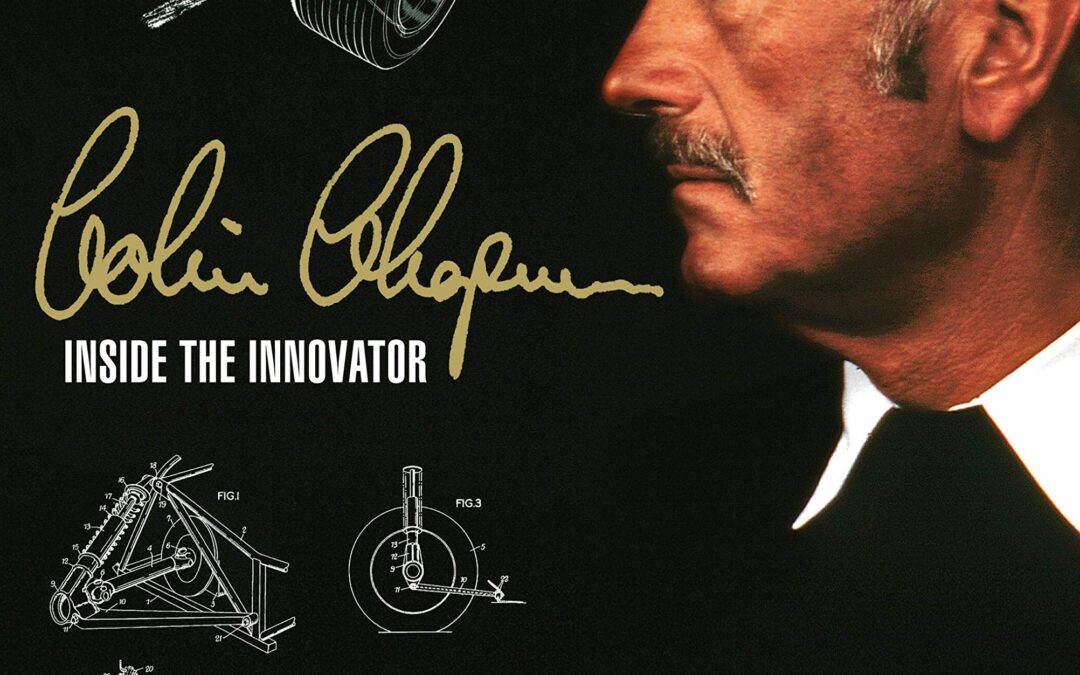
Renowned as one of the greatest creative forces in the world of the automobile, Lotus’s Colin Chapman (1928–82) left a mixed legacy. Was he an unparalleled innovator or an uninhibited exploiter of the uncredited ideas of others? In this landmark book, celebrated author Karl Ludvigsen gets to grips with the legend, digging deep beneath the skin of Chapman and his cars to explore and expose the motivations that drove this mercurial and controversial genius. Interviews with key figures in the Chapman story mesh with information from the author’s extensive archives to make this book a unique and compelling encounter between the engineer-innovator and the historian-investigator.
- Conceiving concepts: assessment of the man whom Keith Duckworth described as ‘the most brilliant conceptual engineer I’ve known’.
- Engine enterprise: recognising that he was, in his words, ‘not an engine man’, Chapman made the best of engines available to him, whether Ford 1172 side-valve, BRM H-16, Cosworth DFV V8 or Pratt & Whitney gas turbine.
- Transmission topics: this chapter moves through Lotus-designed ‘Queerbox’ transaxles, four-wheel drive, automatic clutch actuation and much more.
- Suspension sagas: from makeshift suspension ingenuity on his first Austin-based special to espousal of active suspension just before his death, Chapman gained and exploited an advanced understanding of a car’s underpinnings.
- Structure stories: Chapman’s accomplishments in this field are numerous. Best-known among them are his monocoque innovations, in glass-fibre for the Elite road car and aluminium for the F1 Type 25.
- Whittling weight: obsession with lightness was a Chapman mantra throughout his life. It contributed hugely to the success of his cars, occasionally at an expense of strength and safety that scared off some drivers.
- Aerodynamic adventures: Chapman enjoyed aerodynamics — ‘a very absorbing subject’ — and was at the forefront of major F1 developments in this area.
- Discovering downforce: early insights with wings and wedge-shaped bodies, exemplified by his Types 56 (Indycar) and 72 (F1), led ultimately to the pioneering breakthrough of traction-enhancing ground effect, which reached full flowering with the F1 Lotus 79.
- Ludvigsen gives special attention to Chapman’s exploits at Indianapolis, where he and his cars transformed the nature of America’s premier race with stunning innovations far from the safety of home.

The Boeing 707 family – that includes the forerunner Model 367-80, the KC-135 series of military transports and the slightly smaller Model 720 – was the pioneer of the sweptback wing, incorporating podded engines borrowed from the B-47 military bomber. It was the aircraft that many regard as the design that really ushered in the Jet-Age.
This new book from the established aviation historian Graham Simons examines the entire course of the Boeing 707’s history, charting an impressive design evolution and illustrating the many ways in which the 707’s legacy continues to be felt to this day. In laying the foundation for Boeing’s preeminence on the word’s jetliner market during the 1980s and 90s, the 707 paved the way for future innovations in both civilian and military fields and Graham Simons has put together an image-packed history that records the historic and landmark milestones of this iconic aircraft type.
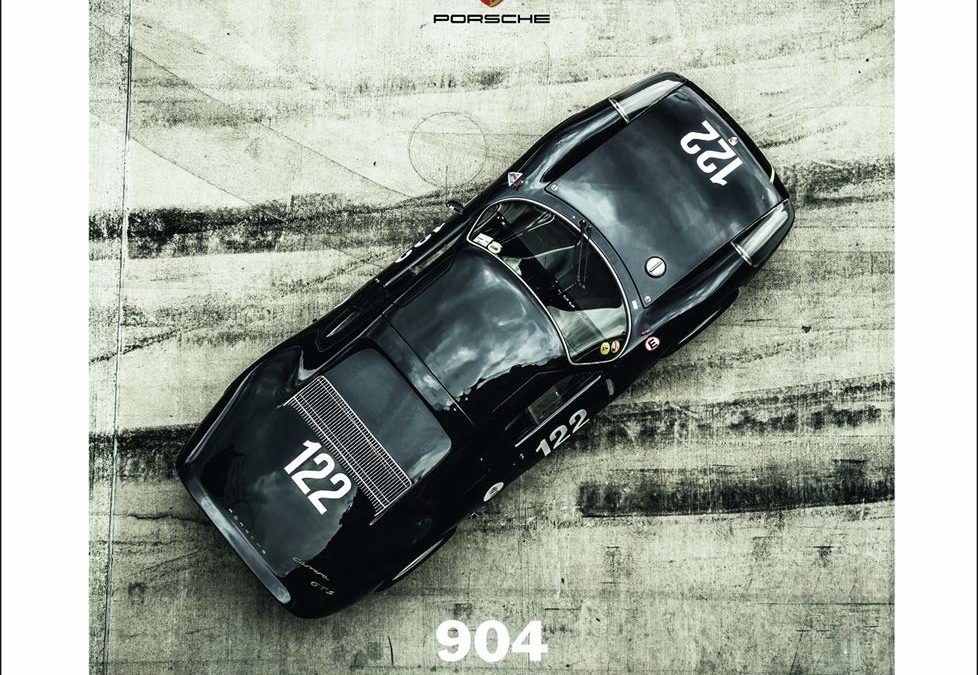
Porsche 904 – a road race car with a cult following
•Everything about the genesis and success story of the Carrera GTS, a coveted rarity among Porsche fans
•A monograph on a masterpiece of Porsche construction: steel box frame in combination with a plastic body
The 904, full name Porsche 904 Carrera GTS, was in many ways a special model for Porsche. Due to the unique design of Ferdinand Porsche, the sports car is affectionately called “Butzi’s masterpiece” and is still considered by many to be one of the most beautiful road racing cars. In a record-breaking development period of six months, the Porsche 904 was implemented in 1963. But not only that made this car a model in terms of innovation.
For homologation (the approval process) as a race car, about 100 units of the Porsche 904 were registered as road vehicles and sold to private customers. The demand was so great that the car soon became a highly exclusive rarity. The distinctive look that characterizes the Porsche design and the combination of technical innovations and low production costs did the rest to give the Porsche 904 a cult status that continues today.
With text by Jürgen Lewandowski and photos by Stefan Bogner, two proven Porsche connoisseurs.
Text in English and German.
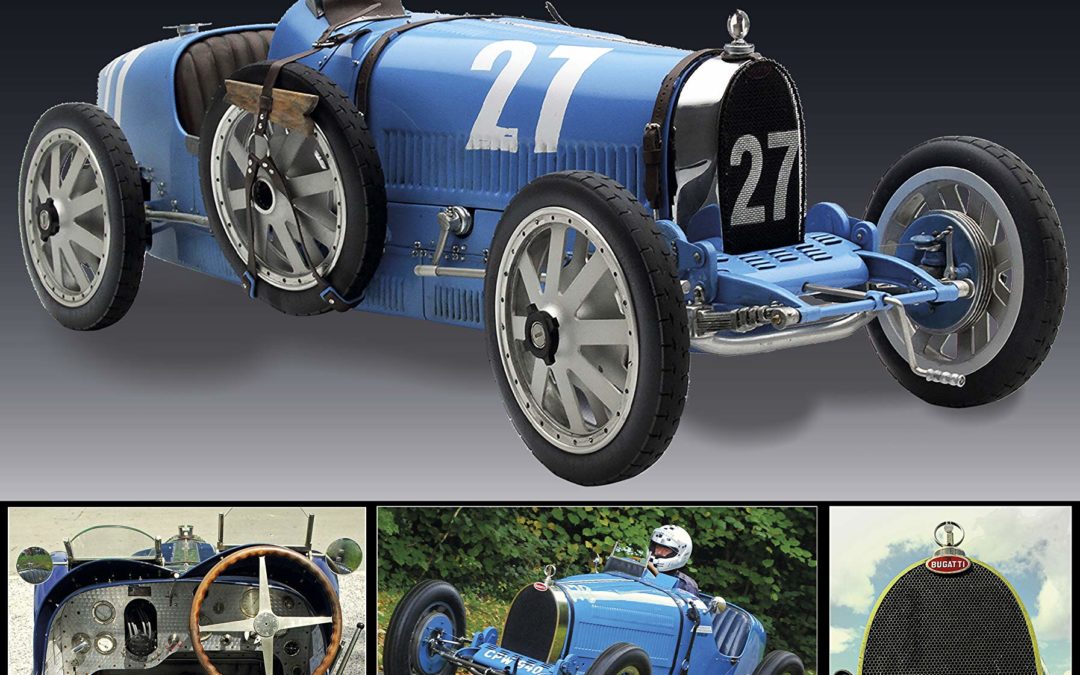
This new book, the first in the CarCraft series delivers an innovative presentation to the car enthusiast by covering the engineering, design, and modeling of one of motoring’s greatest cars across all its epochs.
Ettore Bugatti changed engineering history with his genius and innovations. With its clever engine design, new suspension thinking, and distinct body style, Bugatti’s T35 and its variants defined a new era of design and driving and must surely rank as true ‘supercars’. A motor sport legend was also cast down by these Bugattis.
Experienced automotive writer, industrial designer and Bugatti Owners Club member Lance Cole pays tribute to the car in a detailed yet engaging commentary. New photography, the design story, and full coverage of the modeling options in synthetic materials and die cast metals, create a narrative of vital interest.
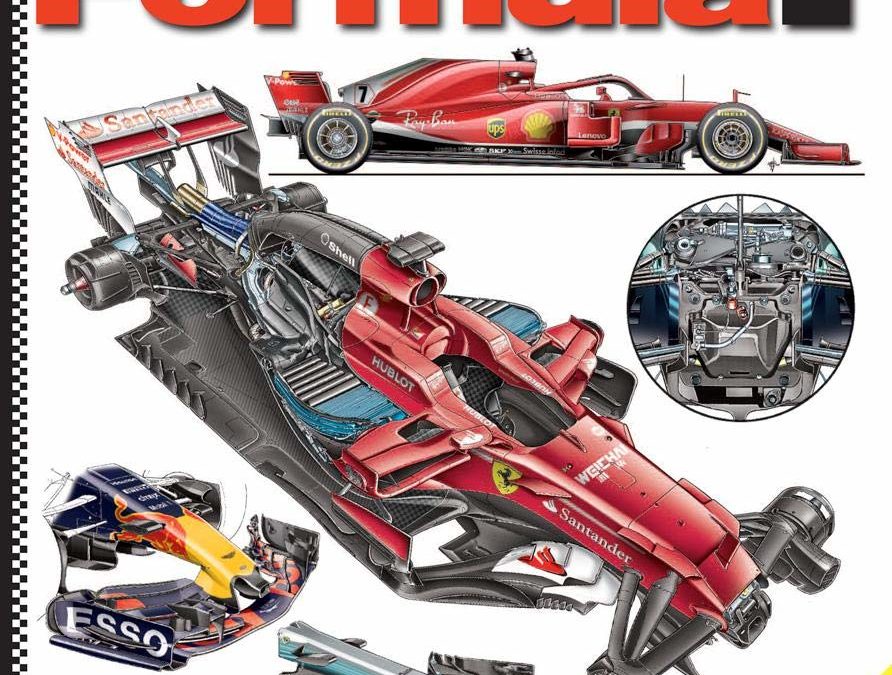
The last edition of an automotive literary classic: the technical analysis of Formula 1 penned by Giorgio Piola. After 25 years of publication, the historic draughtsman is bringing the curtain down on this experience with a volume that examines the last three seasons, from 2016 to 2018, as always reviewing the principal technical innovations in the spheres of chassis and engine design. This three-year analysis is appropriately completed with a retrospective of some of Piola’s most important drawings from a 50-year career that began back in 1969.
Formula 1 Technical Analysis is the only book of its kind that unveils all the technical secrets – even the most carefully hidden ones – of the Formula 1 World Championship cars. Engines, chassis, brakes, tires, this is an especially rigorous analysis of the car, but also their steering wheels and suspension. An essential for real Formula 1 enthusiasts for almost 30 years, this annual , this book also reviews in its second part the main new technical developments devised by the various teams during the covered seasons. The book is illustrated by more than 500 color technical designs, created by Piola himself.
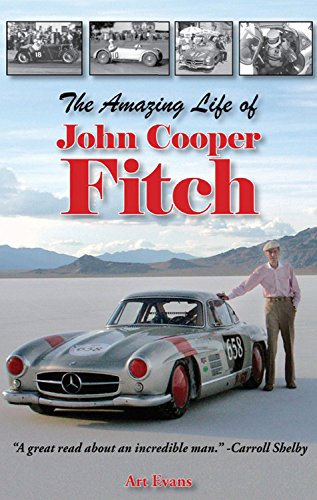
THE DRAMATIC LIFE OF JOHN FITCH: Won more than 20 sports car races, Friend of JFK and Rose Kennedy, Boyfriend of Kathleen Kennedy, Won first race held in Buenos Aires, Kissed by Race-Queen Evita Peron, Shot down German Jet in his P-51, First SCCA National Racing Champion, Won his class at the 1955 Mille Miglia, Among first pilots in Europe in WWII, Turned Corvettes into real sports cars, Invented freeway safety barriers, Safety innovations that saved 1,000s of lives, Sailed the Gulf looking for German subs, POW liberated by General Patton, Won 1953 12-Hours of Sebring race, Won his class in 1951 Le Mans race, Helped make the movie Racers, Designed Lime Rock race course, Set new speed record at Daytona Beach, Won the Team Prize for GM at Sebring!

Before regulations constricted automobile design, cars were small, lithe, and voluptuous. Engines were analog, transmissions were manual, and the experience was visceral. For much of Porsche’s history, their use of air cooled engines helped to differentiate them from their competition. Air cooled engines, which were simple, lightweight, and great sounding, powered some of the marque’s most winning, expressive, and iconic street and race cars.In this book, the legendary 356, 550 Spyder, 911, The DKW-Porsche Special, Carrera GTS, Carrera 6, 910, 914, and 959 are represented in bold, evocative works of art. The illustrations in this book were digitally painted in both photorealistic and graphic styles using Adobe Illustrator, Photoshop, and Sketch. In addition to the finished pieces, many images of the works in progress offer glimpses into the artist’s process. A chapter detailing his techniques is included as well.
About the Artist: Since childhood, Geoff wanted to study car design, but always found reasons not to follow that dream… opting to follow a more practical route instead. After graduating from the prestigious School of Visual Arts (SVA), Geoff spent several years as a graphic designer. In the early 90’s, a promising “new” field (interactive media) piqued his interest, so he returned to SVA to earn a graduate degree in Computer Art. He then embarked on a career in user experience design; first with Time-Warner (where he worked on innovations such as the world’s first interactive TV system), then with The Walt Disney Company, Pioneer Electronics, and others. In his late 40’s, his childhood passion for cars finally motivated him to leave his career and enroll in ArtCenter College of Design’s highly respected Transportation Design program. While in school, Geoff began sketching classic cars as a way to hone his visual communication skills. But as time passed, this activity grew into a great labor of love. Geoff has earned many awards (and patents) for his work, and has been featured in Petrolicious, Worth Magazine, Panorama Magazine, and his artwork is displayed publicly and privately throughout the United States.
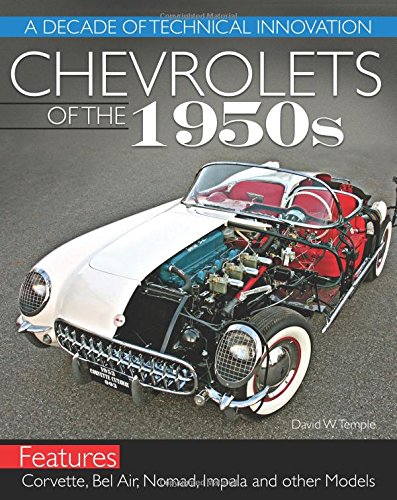
As the 1950s dawned, General Motors focused its industrial might on producing revolutionary rather than evolutionary cars with the ultimate goal to become the clear market leader in the automotive industry. To accomplish this goal, the company designed, developed, and consistently released innovative automotive technology. During the decade, Chevrolet introduced the small-block V-8, the Powerglide automatic transmission, air-conditioning, power steering, and many other innovations that made the cars faster, more comfortable, and safer.
All of the pieces had fallen into place. General Motors had astute leadership, a brilliant engineering team, forward-thinking stylists, a massive manufacturing infrastructure, and the capability to produce cutting-edge technology. With unbridled optimism and exuberance to meet the demands of the booming U.S. economy of the 1950s, the company designed, developed, and delivered an unprecedented number of breakthrough technologies, and established the blueprint for the modern automobile.
Automotive historian and veteran author David Temple goes behind the scenes to reveal how these technologies were designed, manufactured, and installed on Chevrolet’s fine portfolio of cars: the Corvette, 1955-1957 Bel Air, Nomad, Impala, and many more. Inside General Motors, many dedicated and talented leaders who were determined to make Chevrolet cars the best on the market. Vice President of Styling Harley Earl and his team designed the 1953 Corvette concept car for the Motorama show. After receiving numerous accolades, it was rushed into production. Design chief Harley Earl used his design acumen and creative vision as he led his team to style the 1955-1957 Bel-Air. Zora Arkus-Duntov worked tirelessly and transformed the Corvette from a touring car into a genuine sports car. Ed Cole and his engineers overcame many challenges to develop the compact, efficient, and powerful Chevy small-block V-8, which continued in production for decades.
Chevrolets of the 1950s retraces the design, development, and production of these cars, but it also covers innovative vital components that were installed in them. If you have been looking for the inside story on GM’s arguably greatest decade, the models, and the technology it produced, you have found it.










